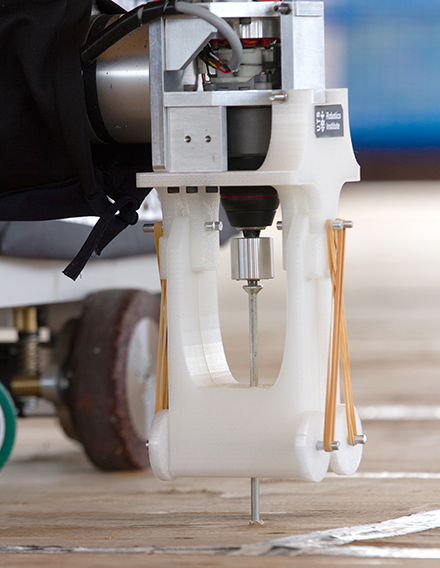Robotic technology has been trialed on a Western Australian construction site in a world-first project at Murdoch University, in conjunction with major partners Aurecon and the University of Technology Sydney. Source: Timberbiz
The robots have been uniquely designed by UTS researchers to deliver cumbersome screw fixings. This task can cause fatigue and injury in workers given the repetitive and labour-intensive nature of this work, especially on Mass Engineered Timber construction projects.
The catalyst for the trial is the construction of Building 360 at Murdoch’s South Street campus – a technology-rich, MET building which will accommodate up to 60% of the university’s teaching requirements. Building 360 will be the largest MET building in Western Australia and a demonstration of Murdoch’s commitment to sustainability, aiming for a 6 Star Green Star rating once complete.
Murdoch University’s Vice Chancellor Professor Andrew Deeks said Building 360 would transform the student and staff experience through offering new, digitally enabled teaching and learning spaces in an environmentally friendly design.
“MET is a completely renewable resource and a more sustainable construction material than conventional steel or concrete, which is a huge contributor of greenhouse gas emissions globally. The building will also have a large array of photovoltaic cells to supply its power needs,” Professor Deeks said.
“Working with our design, engineering and advisory partner Aurecon, we set out to determine where technology would add value to the construction process – an opportunity to modernise an industry that, by and large, is yet to take a significant leap in innovation.
“The concept was developed to trial robots installing screw fixings – an important, but labour intensive task, that’s essential on MET construction sites.”
Aurecon’s Managing Director, Built Environment Australia, Tim Spies, said the pilot project showed that by thinking more innovatively, the timber industry could lead the way in improving construction project outcomes.
“The project’s immediate objective is focused on a proof of concept, to demonstrate the robot’s capability of installing screw fixings in an accurate manner,” Mr Spies said.
“The long-term objective is to prove that the modular nature of timber construction will benefit from the automation of some on-site construction activities, helping to increase productivity, reduce cost, improve workers’ OH&S, and advance innovation in the construction industry.”
Distinguished Professor of the UTS Robotics Institute and the project leader, Dikai Liu, said intelligent robots were changing construction.
“Construction sites are varied, complex and changing – and that can be a real challenge for a robot to navigate and conduct operations such as drilling a screw into the right position,” Professor Liu said.
“What we have been able to design is an intelligent robot that can focus on an important task even amidst this disruptive environment.”
There are around 200,000 to 300,000 screw fixings on the Building 360 construction site and the robots was trialed installing approximately 50 to 100 fixings as part of the proof of concept.








